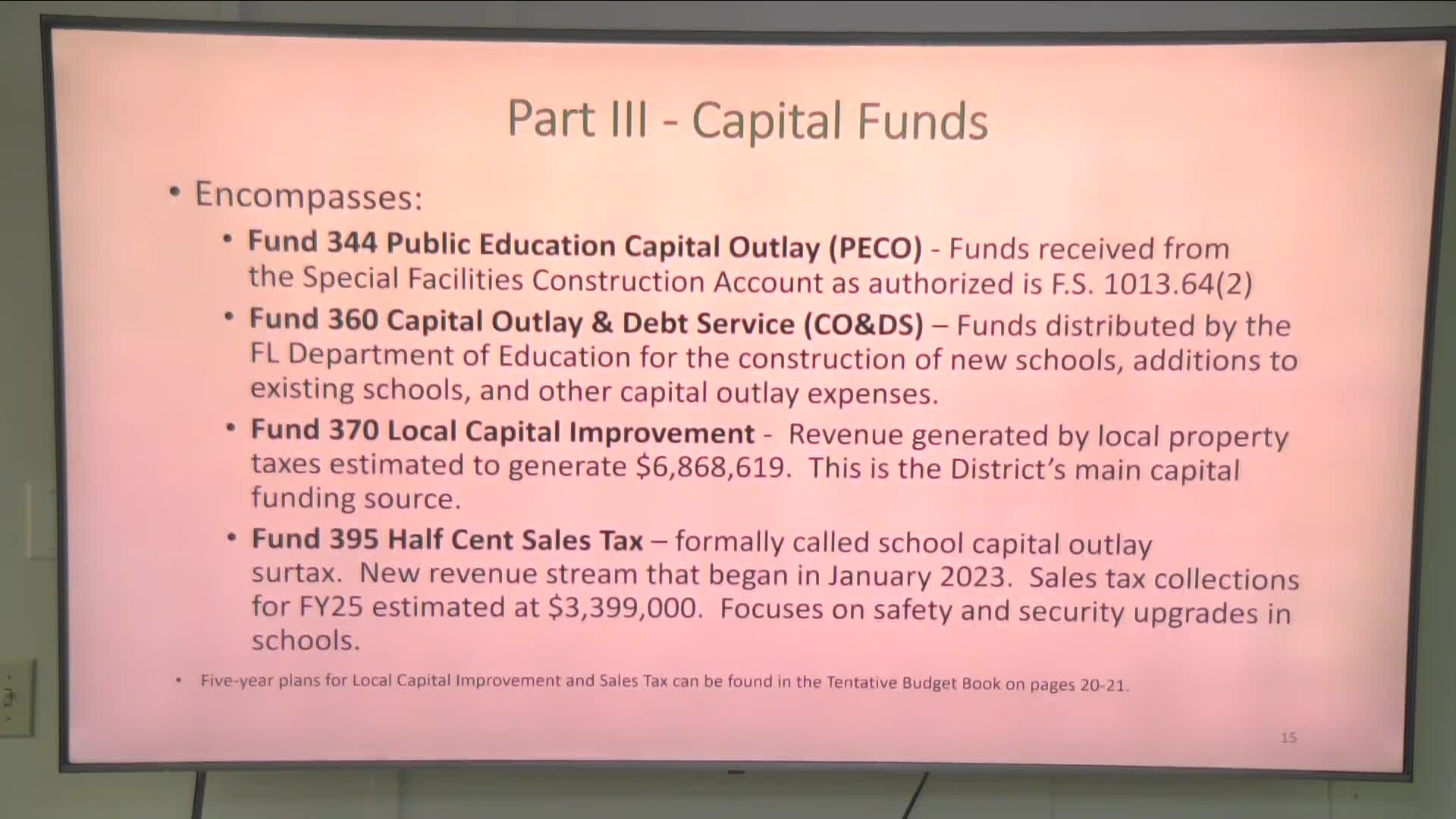Budget Strategies Unveiled Amid Funding Shortfalls
July 29, 2024 | Hendry, School Districts, Florida

This article was created by AI summarizing key points discussed. AI makes mistakes, so for full details and context, please refer to the video of the full meeting. Please report any errors so we can fix them. Report an error »

During a recent government meeting, officials discussed the financial outlook for the upcoming fiscal year, highlighting both challenges and opportunities within the budget. A significant shortfall of approximately $100,520,000 was noted, prompting discussions on potential solutions such as extending payment schedules or reallocating funds from other earnings.
The meeting emphasized the importance of capital funding, with an anticipated increase of over $30 million in capital expenses, primarily from public education capital funds. This funding is earmarked for the construction of new schools, including a new global high school, which is already budgeted for the current fiscal year. Local property taxes are projected to generate around $6 million, serving as a crucial source of capital funding.
However, the meeting also revealed a concerning decrease in federal funding, particularly a drop of $26 million in part four funding due to the conclusion of the Elementary and Secondary School Emergency Relief (ESSER) funding, commonly referred to as the \"ESSER cliff.\" This reduction is expected to impact various programs, including food services and special revenue initiatives.
Food service operations showed a healthy balance, with a budget of $11.9 million for the upcoming fiscal year. Notably, there was a significant increase in student lunches and after-school meals served, attributed to improved awareness and satisfaction with the food service provided by Sodexo.
Additionally, the meeting addressed the self-insured dental and medical funds. After a historical decline in the dental fund balance, officials increased rates to stabilize the fund, which has shown positive results. For the medical fund, there will be no increase in employee or employer contributions for the first time in years, despite rising medical expenses. Projections indicate a potential increase in the medical fund balance by approximately $600,000 by the end of the fiscal year.
Overall, while the budget presents challenges, particularly with federal funding cuts, there are also promising developments in capital funding and food service operations that could support continued growth and stability in the district.
The meeting emphasized the importance of capital funding, with an anticipated increase of over $30 million in capital expenses, primarily from public education capital funds. This funding is earmarked for the construction of new schools, including a new global high school, which is already budgeted for the current fiscal year. Local property taxes are projected to generate around $6 million, serving as a crucial source of capital funding.
However, the meeting also revealed a concerning decrease in federal funding, particularly a drop of $26 million in part four funding due to the conclusion of the Elementary and Secondary School Emergency Relief (ESSER) funding, commonly referred to as the \"ESSER cliff.\" This reduction is expected to impact various programs, including food services and special revenue initiatives.
Food service operations showed a healthy balance, with a budget of $11.9 million for the upcoming fiscal year. Notably, there was a significant increase in student lunches and after-school meals served, attributed to improved awareness and satisfaction with the food service provided by Sodexo.
Additionally, the meeting addressed the self-insured dental and medical funds. After a historical decline in the dental fund balance, officials increased rates to stabilize the fund, which has shown positive results. For the medical fund, there will be no increase in employee or employer contributions for the first time in years, despite rising medical expenses. Projections indicate a potential increase in the medical fund balance by approximately $600,000 by the end of the fiscal year.
Overall, while the budget presents challenges, particularly with federal funding cuts, there are also promising developments in capital funding and food service operations that could support continued growth and stability in the district.
View full meeting
This article is based on a recent meeting—watch the full video and explore the complete transcript for deeper insights into the discussion.
View full meeting